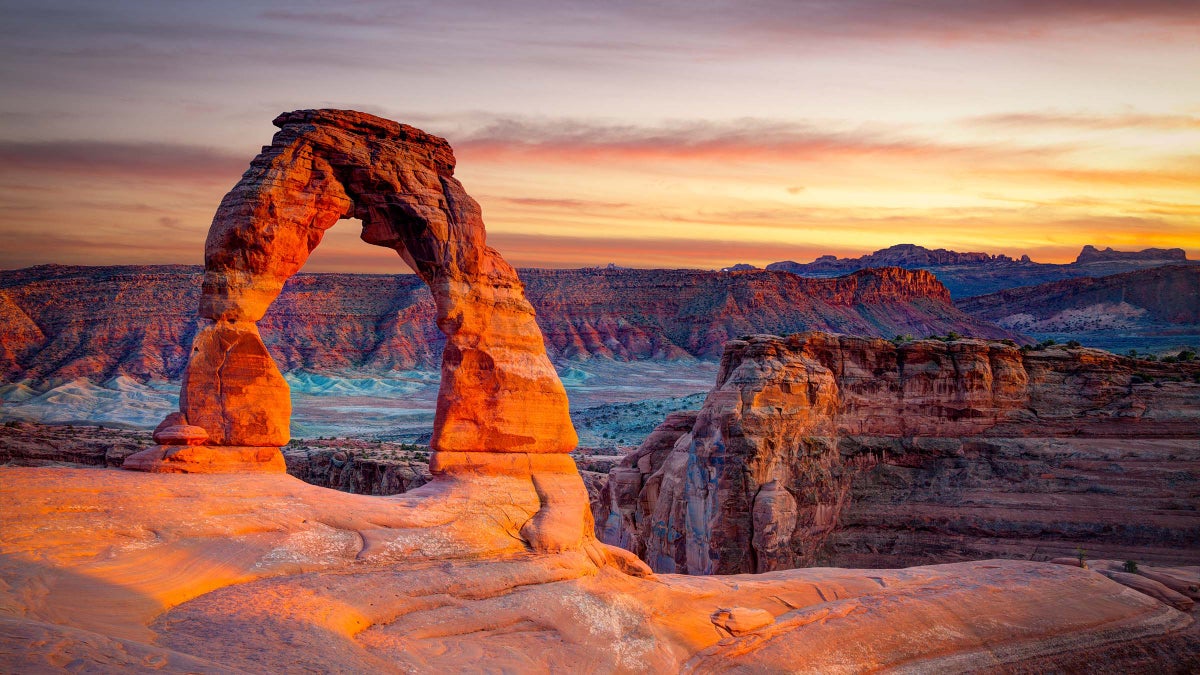Products You May Like
Heading out the door? Read this article on the new Outside+ app available now on iOS devices for members!
Download the app.
Since their introduction in the early days of the Covid pandemic, timed entry reservations at national parks have been a controversial topic among visitors. Some have lauded how reservations have cut down on crowding and done away with the (sometimes hours-long) lines that visitors used to wait in to get into popular parks; others have mourned what seems to be the end of the spontaneous national park hiking trip and the regimentation of the outdoors. If you’re part of the latter group, we have bad news for you: New evidence suggests you may be in the minority.
In a recently published study, Utah State University looked at more than 500 surveys completed by Arches National Park visitors in 2022, the first year that the park implemented a timed-entry system during the high season. The vast majority of respondents—some 84 percent—approved of the change and said they would like to see a similar reservation system put in place for their next trip to the park. In addition, 89 percent of the visitors polled were able to get a timed-entry ticket for the park, and 98 percent of those were able to enter at their chosen time.
“This study shows that many visitors to Arches National Park had a positive experience with the pilot timed entry system,” Iree Wheeler, a Ph.D. student at Utah State University who coauthored the study, told the National Parks Conservation Association. “Congestion and crowding were alleviated, and a majority of visitors prefer a reservation system for future trips to Arches National Park.”
Arches’s administration has been discussing a possible reservation system for years, since long before the Covid pandemic sent thousands of new hikers outdoors and strained federal and state land management systems. The park is both very popular—it’s a main attraction for visitors to Moab, and is conveniently located just outside the city limits—and small. At just 119 square miles, it’s about a tenth the size of Yosemite, and it gets crowded quickly. The park gets more than 1.5 million visitors each year, which compared to Yosemite’s 3.5 million, means there isn’t as much space for each Arches visitor to roam. Generalizing visitors’ acceptance of new restrictions there to the park system as a whole isn’t necessarily straightforward: Arches isn’t an especially popular destination for locals, who tend to pick other, less-traveled trailheads for their workaday hikes. Tourists headed to Moab also tend to plan out their vacations—hotels and campgrounds fill up quickly during the high season—so planning out their national park visit while they’re at it is hardly a chore.
Glance around, and it’s clear that reservations are quickly becoming an accepted part of visiting a national park. Our local park, Rocky Mountain, will require timed reservations for the third summer in a row, and the grousing from visitors has largely died down, replaced by a grudging consensus that a few minutes on reservation.gov is a fair price to pay for reduced trail and road traffic. After some initial user confusion, Glacier National Park will expand its vehicle reservation system to all of the park’s entrances this summer, requiring just about anyone visiting during busy parts of the year to plan in advance. Other parks including Zion and Shenandoah now require reservations for their most popular hikes. Yosemite has nixed timed-entry reservations for this summer after two years of requiring it, but aside from that one big exception, it seems that reservations are here for the long term at our most popular national parks.
